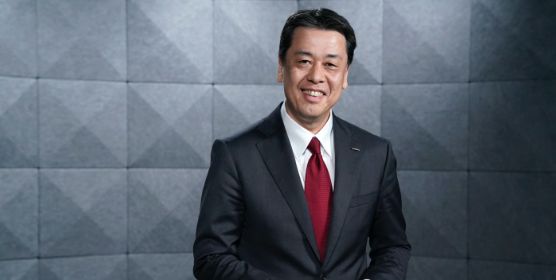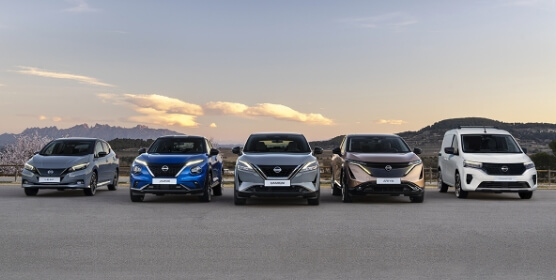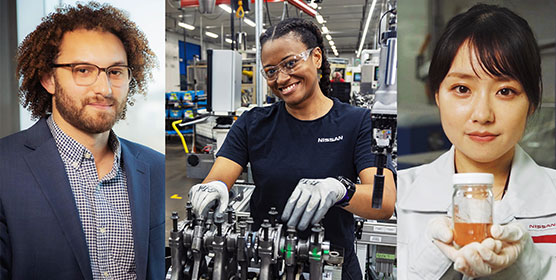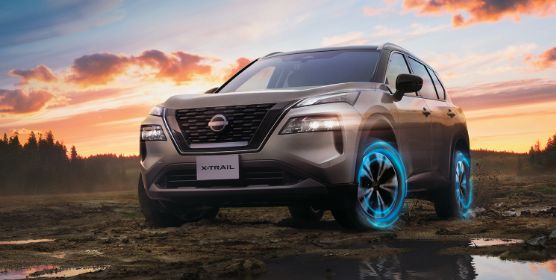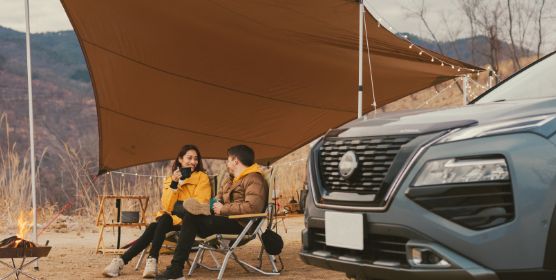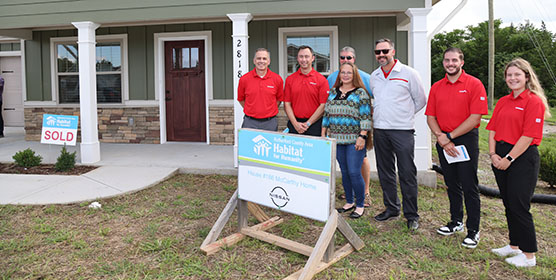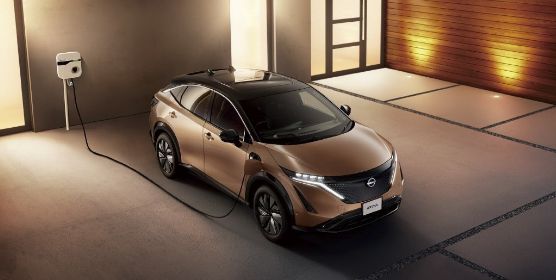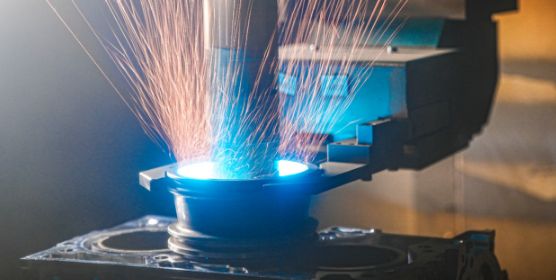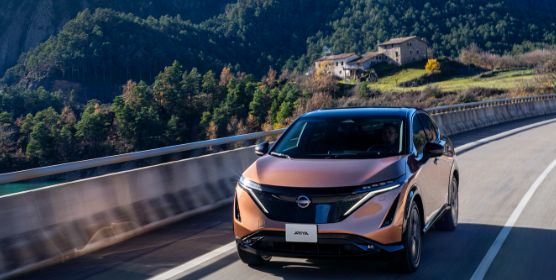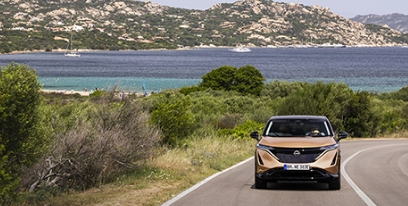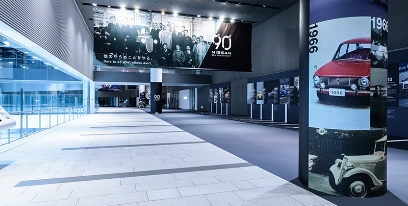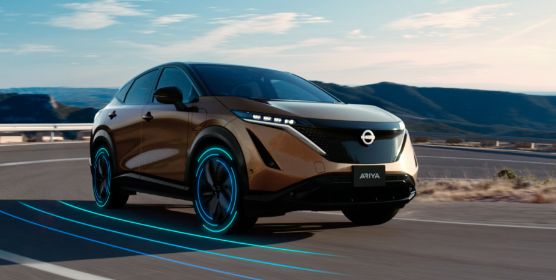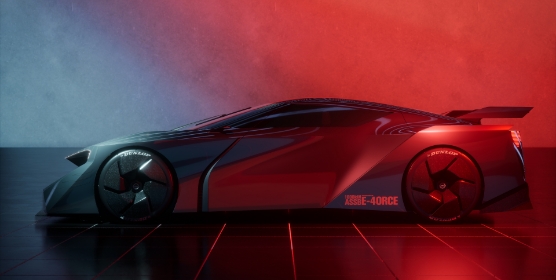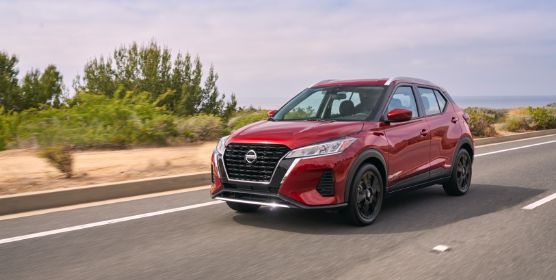Legend 02: A determined visionary, Yutaka Katayama
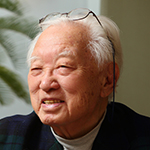
Yutaka Katayama
Born in September 1909, in Harunocho, Shuchi-gun (now Hamamatsu City), Shizuoka Prefecture.He went to the US for the first time as an assistant on a high-speed vessel carrying raw silk to the US in 1927, while he was a student at Keio University. This first-hand experience of how America worked was an advantage in his later business career. He joined Nissan Motor in 1935 and was assigned to the Administration Department, where he worked in publicity and advertising.
He
proposed
an
ad
that
focused
on
the
customer’s
lifestyle
with
a
car,
drawing
a
line
from
the
conventional
advertising
of
the
day
that
loudly
repeated
the
car’s
name
over
and
over.
Katayama
was
successful
in
communicating
Nissan
and
its
products
in
a
smart
manner
by
featuring
representative
celebrities
of
the
time
in
the
company’s
TV
advertising
and
collaborating
with
other
industries,
which
was
an
innovative
technique
at
the
time.
He
also
promoted
the
first
All-Japan
Motor
Show
in
1954,
in
anticipation
of
the
emerging
era
of
motorisation
in
Japan
and
so
that
the
entire
industry
could
make
a
statement
to
the
world.
All
of
the
country’s
automakers
participated
and
the
show
was
a
huge
success,
attracting
over
half
a
million
visitors.
With
the
company
looking
ahead
to
the
full-scale
export
of
Datsun
cars,
he
was
team
manager
as
two
Datsun
210s
were
entered
in
a
gruelling
rally
circumnavigating
the
Australian
continent.
Nissan
snared
the
honour
of
a
class
victory,
instantly
catapulting
the
brand
into
worldwide
renown.
In
1960,
Katayama
started
building
the
foundations
of
Nissan
North
America,
working
from
a
base
in
Los
Angeles.
In
the
meantime,
he
put
together
the
key
concepts
for
the
Z-car,
a
model
that
made
it
possible
for
everyone
to
enjoy
fast,
agile
driving,
thereby
contributing
significantly
to
the
birth
of
an
exceptional
sports
car.
In
1998,
he
was
inducted
into
the
Automotive
Hall
of
Fame
in
Dearborn,
Michigan,
with
his
citation
declaring
that
‘he
accomplished
numerous
great
achievements
in
the
USA,
where
motorisation
is
highly
advanced,
because
of
his
strong
passion
for
automobiles,
long-term
management
perspective,
and
diverse
experiences,
and,
above
all,
because
of
his
integrity—he
loved,
understood,
and
unstintingly
cooperated
with
and
supported
people
regardless
of
nationality,
ignoring
borders.’
He
is
a
great
figure
in
the
automotive
industry
of
whom
Japan
should
be
very
proud.
Still
giving
interviews
at
the
astonishing
age
of
104,
he
mentioned
that
his
favourite
food
was
steak,
and
that
he
would
regularly
drink
two
to
three
litres
of
water
a
day,
declaring
that
‘water
is
my
medicine.’
He
passed
away
on
19
February
2015,
at
the
age
of
105.
Origins lie in sense of exhilaration
Yutaka Katayama, also known as Mr. K, will celebrate his 105th birthday in September 2014. With a beaming smile and charming poise, he made us burst into laughter and sometimes made us stop and think as he mischievously related a string of episodes from his long and illustrious life, making us completely forget that the old man in front of us was a ‘historic’ person born in the same year as jazz greats Gene Krupa and Benny Goodman. The person in front of us seemed to be simply a boy who loved cars. His freshness, sensitivity, and youthful spirit must be why Katayama has always remained Mr K instead of becoming a venerable elder with a famous name who has made it to the age of 104.
I was very surprised to learn that for Katayama, ‘something to ride’ was in the beginning a horse. ‘My father loved horses and every morning before he went to work he would go for a ride on his horse,’ recalled Katayama. ‘We were living in Tomakomai in Hokkaido at the time and he galloped along the water’s edge at the beach. I sat in front of him and, how can I express that feeling, it was a pure jubilation that cannot be expressed in words, a vitality that invigorates you from head to toe.’
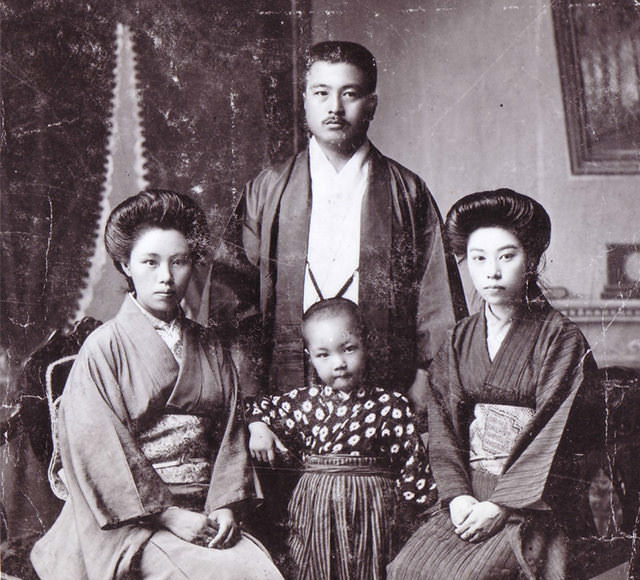
Mr. Katayama in childhood, with parents and his aunt.
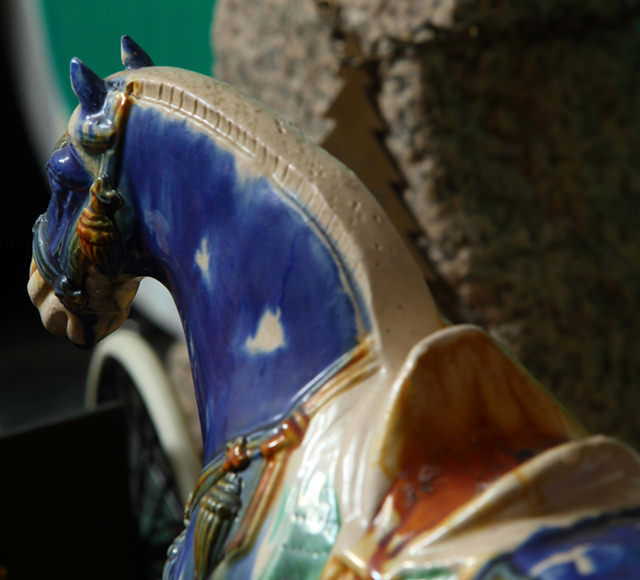
The ornament of a horse putting in his office.
From the time that he started to work for Nissan Motor in 1935, he always kept searching for the ideal relationship between human and car and it was fascinating to discover that his sense of that ideal was rooted in his original experience of the relationship between man and horse when he still a young boy.
‘Of course, horses have not only provided humans with pleasure. We also owe them a huge amount because of all that they have done for us over the course of 5,000 years. Automobiles were devised as a potential replacement for horses, but it has only been 100 years since they were commercialised and the unfortunate truth is that we have not been successful at producing cars that can completely replace horses. I know this all too well because I lived close to horses when I was a child. A horse makes itself to go in the direction in which the rider wishes to go and it can return on its own when the rider has dismounted. However, it would be hasty to conclude that all we have to do is “make an automatic car that moves on its own”,’ Katayama exclaimed.
Insisting on keeping it simple
He went on to explain his thinking more fully. ‘After all, horses have to be controlled by humans. The rider needs to bring out the horse’s best and compensate for its weaknesses. Cars are the same. They become good cars if drivers handle them well. As a result, a driver can experience a sense of jubilation beyond all reason, sort of like adding one and one to get not two but, say, five or 10, which is the joy of driving a car that a driver can only feel if he and the car become like one. In any event, we’re not selling empty bodies called cars. Rather, we sell “driving performance” or “a driving experience”. We earn money by offering this driving experience to our customers. That’s why I persist in valuing the well-spring that is the driving experience.
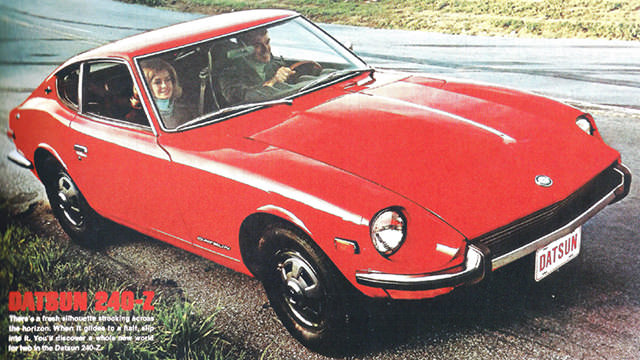
‘In
any
case,
even
though
we
have
been
disciplined
and
focused
and
have
worked
hard,
it
has
been
very
difficult
to
create
something
that
truly
can
replace
a
horse.
People
are
now
talking
about
new
features
for
cars,
like
automatic
collision
avoidance
systems
and
devices
to
wake
up
drowsy
drivers.
A
horse
may
not
wake
you
up,
but
it
will
stop
on
its
own
if
it’s
approaching
danger.
That’s
because
the
rider
is
paying
attention
and
the
horse
senses
the
rider’s
wishes
and
perceives
the
situation
correctly.
That’s
why
horses
were
appreciated
so
much
during
the
days
of
the
cowboys
and
their
horses
in
the
US.
I
went
to
the
US
for
the
first
time
85
years
ago,
while
I
was
still
a
student,
and
in
those
days
horses
were
still
used
in
a
wide
range
of
daily
activities
by
the
American
people.
Automobiles
were
still
playing
the
role
of
supplementing
horses
back
then.’
Reflections
such
as
these,
which
dated
back
to
Katayama’s
childhood,
ultimately
changed
form
and
led
to
the
birth
of
‘that
sports
car’
that
we
all
know
so
well.
‘How can we transpose the relationship between man and horse into the one between man and car? Even after I was sent to Los Angeles in 1960 to establish Nissan Motor in the US, this question never really left me. Eventually I came up with the concept of the Z-car. It was a sports car with a sleek body with a long nose and a short deck, designed so that it could be built utilizing some of the parts and components that were already used in our other production cars, and it was a car that anybody could drive easily and that would give the driver that incredible feeling of jubilation that comes when car and driver are as one. Fortunately, it became a big hit and we were soon turning out 4,000 units a month. Then we began to deploy dedicated production lines to keep up with demand. I personally think that our success reflected our ability to capture something of the relationship between man and horse and that the purity and simplicity of this concept touched the hearts and spirits of our customers.

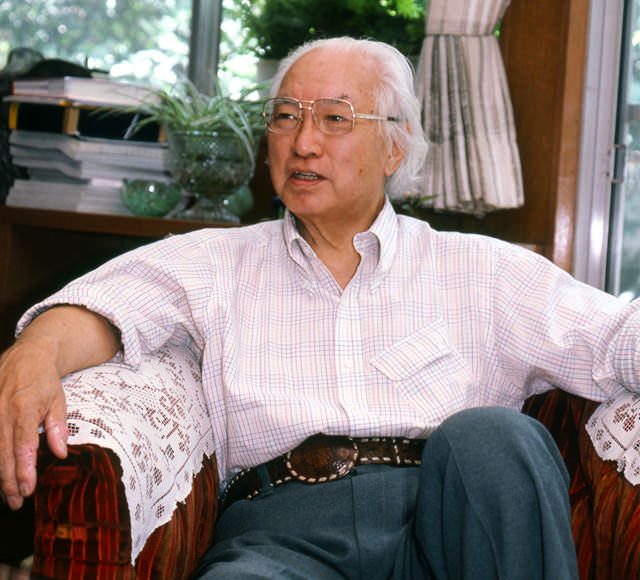
Doctors and medicine
Katayama tends to be in the spotlight because of his reputation as ‘the father of the Z-car’, but he became well known as a man of innovative ideas immediately after he joined Nissan Motor. ‘To be honest, I wanted to study engineering at Tokyo University and then go into car manufacturing, but this dream never came true (laughter). Instead, I graduated from Keio University and joined Nissan, where I was assigned to the Administration Department and was responsible for publicity and advertising. But I’m grateful now because this experience taught me a lot.’
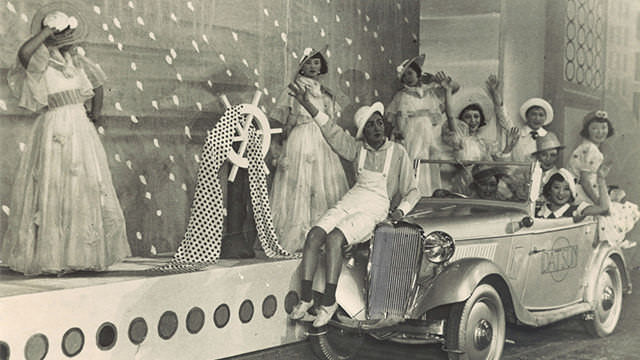
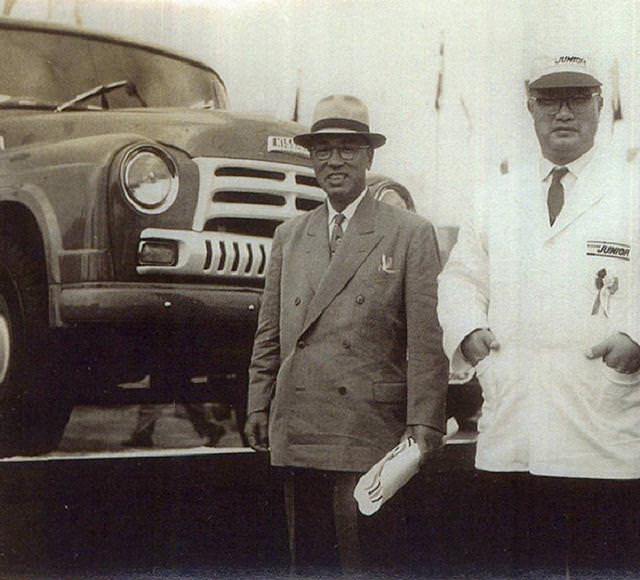
Here are some examples that showcase his ideas. In advertising for Datsun cars, he featured Takiko Mizunoe, an extremely popular actress who typically played the part of a male on stage in a regular revue and was so beautiful that she was nicknamed the ‘fair lady in men’s attire’. Katayama stunned the audience when he introduced 10 Datsun cars with Takiko Mizunoe on the stage of the Shochiku Girls Revue Company at the height of the latter’s popularity in 1935. In another move, he masterminded the adoption of Nissan vans by Mitsukoshi Department Store for the transport of their merchandise. Mitsukoshi enjoyed huge status and prestige and the ordinary people of the time aspired to be able to shop there, to have a taste of the refined existence of the upper classes of the day, as encapsulated by the department store’s catch copy: ‘Enjoy the Imperial Theatre Today, Enjoy Mitsukoshi Tomorrow.’ Another example of Katayama’s innovative spirit was the first All-Japan Motor Show (now the Tokyo Motor Show), which he conceived of and promoted. It was held in 1954 with the participation of all of Japan’s automakers and helped spur the rapid advance of motorisation in the country.
Among the various milestones in Katayama’s career at Nissan during this period, one event worthy of special mention is a class victory in 1958 at the Mobilgas Trial—Round Australia, where two Datsun 210s were entered, the Fuji and the Sakura. Prior to the full-scale export of Datsun cars, the company wanted to test their performance and potential by entering them in the world’s most gruelling automobile race, covering 16,000 km of unpaved roads in the harsh Australian outback over the course of 19 days.
He recalled, ‘At the time, the Datsun 210 was powered by a 988cc OHV engine with a maximum output of 34ps. If you loaded it up with enough spare parts to handle the worst-case scenario on that route, it wasn’t much different from squishing eight people into this four-passenger car. Honestly, even though I was the team manager, I didn’t think we would win.’
Against all odds, however, the Fuji won the race in the class up to 1,000cc. News agencies around the world immediately reported this incredible achievement and the Datsun name and Datsun’s toughness were catapulted into the limelight worldwide. However, even as he received this welcome news and he and the team celebrated their famous victory, Katayama was absorbing a lesson that had struck home like a hammer blow and left him almost humiliated during the rally that circumnavigated the Australian continent.
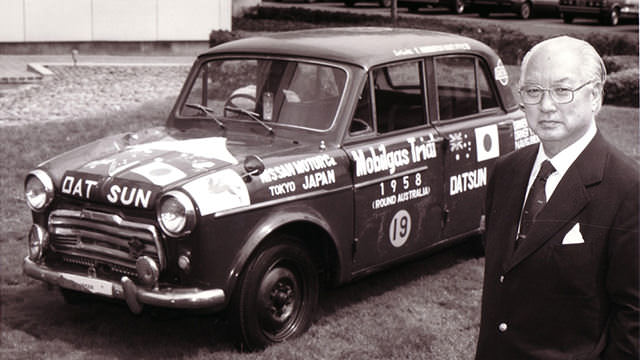
‘The car that won the overall victory, one of our rivals, was not a sturdy car at all. In fact, it was rather weak. So how on earth could such a car have won the rally? The answer is that our rival was very well prepared to deal with any problems that arose by making the most use of its dealer network, which was established throughout Australia, and deploying service teams at every strategic point. We are talking about the cars of 55 years ago and in general they could not drive 16,000km at one go without any problems. But if you have mechanics on hand to change the oil and filters, check fluid levels, replace parts, and make adjustments and repairs as needed, then a vehicle definitely gets back to having a “healthy body”, as it were. Witnessing this, I realised that cars were the same as people. If you always have doctors and medicine standing by as needed, you can expect to get healthy again if you should happen to fall ill.’
Grateful for friendship
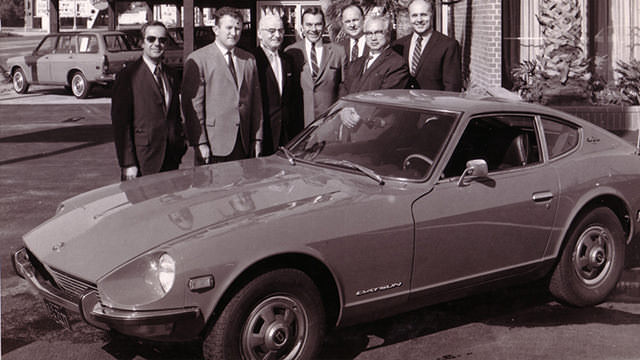
Spurred
by
its
success
in
the
Australian
rally,
Nissan
Motor
launched
full-scale
exports
of
Datsun
cars
and,
in
1960,
the
company
sent
Katayama
to
Los
Angeles,
which
was
the
front
line
of
the
market.
‘More
than
to
promote
the
performance
and
toughness
of
our
products,
[I
went
to
the
US]
to
build
a
service
network
that
was
capable
of
responding
to
any
problems
quickly.
The
goal
was
to
build
a
dealer
network
where
the
main
doctors
for
Datsuns
were
always
on
duty
and
spare
parts
were
always
sufficiently
stocked.’
But dealers selling new cars on the West Coast responded coldly to this strange Japanese businessman who was suddenly visiting them with an unfamiliar model. Katayama therefore got things started by calling on dealers of pre-owned cars, one by one, and asked them to become Datsun dealers.
‘In the beginning, Datsun dealers had no status or prestige and they were not wealthy either. On top of that, because automobiles were constantly evolving, parts would go out of use after six months as they were replaced by new designs. Nevertheless, I asked the dealers to make sure they were ready for any problems by stocking spare parts and they responded by saying that they understood and they worked hard to comply. During the difficult times, we all gritted our teeth and worked together and we made it through. For me, they are not just dealers but friends. I’m speaking like I’m a big man, but I owe everything to them.’
Meanwhile,
Japanese
engineers
were
visiting
the
US
in
groups
of
around
10,
with
the
aim
of
making
the
company’s
products
more
competitive
and
more
attractive.
They
visited
dealers
in
different
states
and
learned
and
absorbed
first-hand
how
Datsun
cars
were
used
in
the
US
and
what
kinds
of
vehicles
US
customers
were
looking
for.
‘In
those
days,
the
US
government
hardly
ever
issued
work
visas
to
the
Japanese.
The
only
way
to
enter
the
country
was
on
a
tourist
visa,
which
only
let
you
stay
in
the
States
for
two
weeks.
When
it
expired,
you
went
to
Canada
and
then
re-entered
the
US.
That’s
just
one
example
of
the
problems
and
difficulties
we
had
to
put
up
with.’
This groundwork was rewarded in a big way in 1967 when the company introduced the Datsun Bluebird 510, a masterful car with a clean body powered by a newly designed SOHC engine and incorporating a four-wheel independent suspension. And then, when the 510-based Z-car (240 Z in the US) was launched, the company’s US dealers found themselves welcoming throngs of people scrambling to buy a Datsun.
‘Our dealer friends, with whom we had shared the hard times, were able to grow into successful businessmen in handsome suits. But all of them were very grateful and they thanked Nissan for helping them achieve such success. Friends are blessings (laughter).’
In this way, Yutaka Katayama laid the foundations for Nissan’s explosive growth in the US. His straightforward manner and his steadfast belief in and commitment to the industry and his work won the respect and admiration of the leaders of the US auto industry and of the entire automotive community in the US, such that Katayama was inducted into the Automotive Hall of Fame in Dearborn, Michigan in 1998. Mr K reflected the affection and expectations he had for the horses of his boyhood directly in his life and work and throughout his life he has charmed the people around him. For a car enthusiast, his life is endlessly enviable.
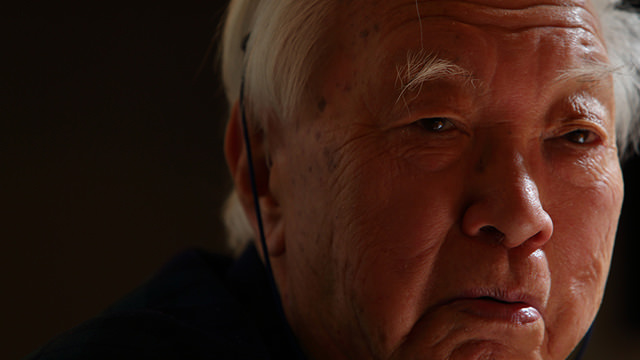
Writer Profile
Yoshihisa
Hayata
Born
in
1967
in
Tochigi
Prefecture.
Hayata
was
totally
swept
up
by
the
super-car
boom
when
he
was
9th
and
grew
up
with
a
love
of
cars
that
has
continued
to
this
day.
After
graduating
from
university,
he
went
to
work
for
specialist
automotive
magazines
such
as
Autosport,
Car
Graphic,
and
Navi.
He
currently
is
back
with
Car
Graphic
again.
A
46-year-old
guy
who
is
also
an
enthusiastic
fan
of
ice
hockey
team
HC
Tochigi-Nikko
Ice
Bucks.


